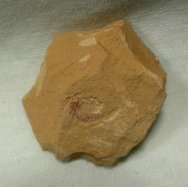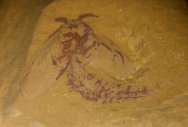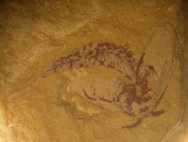| 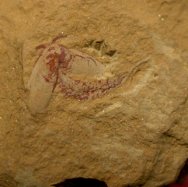 Description:
This unusual arthropod is known as Ercaicunia multinodosa. The species
is known mostly from the thin-shelled carapace, with this one coming
from the most famous location of all, Maotianshan (Mao Tian Hill),
site of the discovery of the Chengjiang Biota by Hou Xian-guang
in 1984. The diversity of soft-tissue fossils is astonishing: algae,
medusiforms, sponges, priapulids, annelid-like worms, echinoderms,
arthropods (including trilobites), hemichordates, chordates, and
the first agnathan fish make up just a small fraction of the total.
Numerous problematic forms are known as well, some of which may
have represented failed attempts at diversity that did not persist
to the present day. Description:
This unusual arthropod is known as Ercaicunia multinodosa. The species
is known mostly from the thin-shelled carapace, with this one coming
from the most famous location of all, Maotianshan (Mao Tian Hill),
site of the discovery of the Chengjiang Biota by Hou Xian-guang
in 1984. The diversity of soft-tissue fossils is astonishing: algae,
medusiforms, sponges, priapulids, annelid-like worms, echinoderms,
arthropods (including trilobites), hemichordates, chordates, and
the first agnathan fish make up just a small fraction of the total.
Numerous problematic forms are known as well, some of which may
have represented failed attempts at diversity that did not persist
to the present day.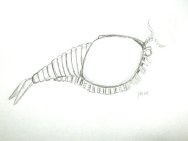
The
systematic position of this taxon has undergone several revisions.
It was established as the sole member of the Family Clypercarididae,
and was originally known from only one specimen. Those from Chengjiang
have been called Ercaicunia multinodosa, but some scientists believe
that to be a junior synonym of Clypecaris. It differs from the more
common genus Waptia in having a higher number of body segments.
While the species is known from other Lower Cambrian locations such
as Haikou, those from the Chengjiang Biota are rare, and are known
to show the best soft part preservation (notice the gut line,segmentation,
and most rare of all: antennae), making it a highly desirable specimen
of a rare taxon.
|


